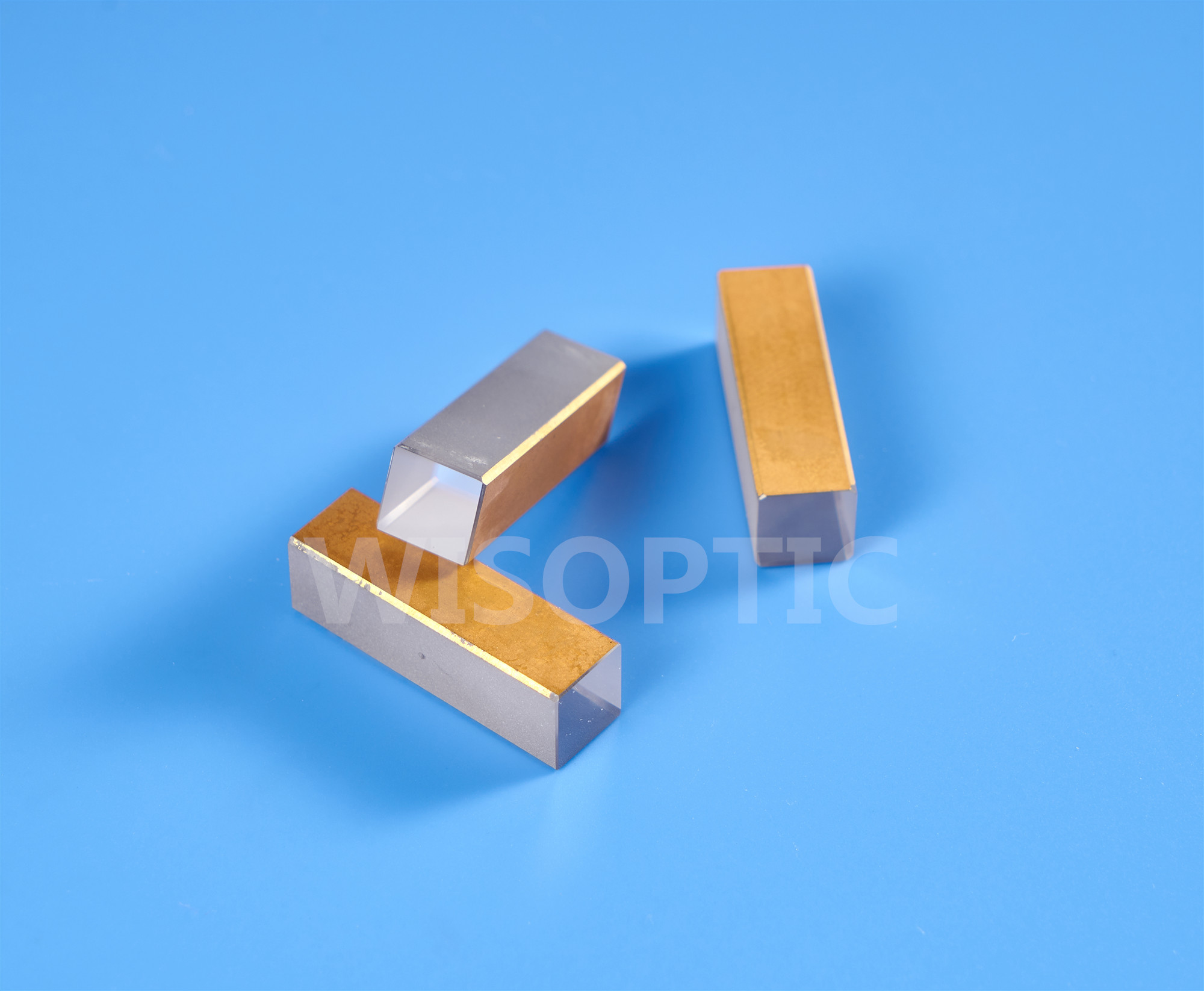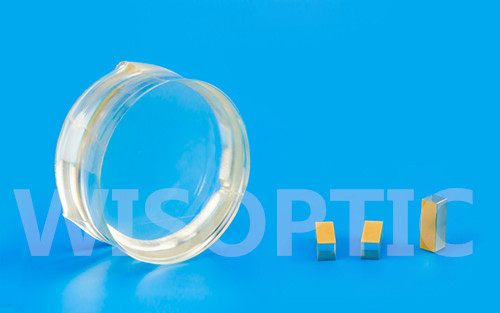Lithium niobate crystal is an excellent piezoelectric material with the following properties: high Curie temperature, low temperature coefficient of piezoelectric effect, high electromechanical coupling coefficient, low dielectric loss, stable physical and chemical properties, good processing performance, and easy to prepare large size and high quality crystal. Compared with the commonly used piezoelectric crystal quartz, LN crystal has higher sound velocity for the preparation of high frequency components, so can be used to make resonator, transducer, delay line, filter, etc.. which have very popular application in civilian areas of mobile communications, satellite communications, digital signal processing, TV, radio, radar, remote sensing, and military areas of electric countermeasures, fuze, guidance, etc..
The most widely application of LN crystal is the surface acoustic wave filter (SAWF). Since the 1970s, midfrequency SAWF made from LN crystal have been widely used in color TV sets, cordless phones, electronic remote controls, etc. In 2010, with the application of silicon tuner integrated chips, IF surface wave filters in TV sets have basically withdrawn from the market. Since the 1980s, mobile communication has shifted from 2G to 5G, and mobile terminal must be backward compatibility, these brought a surge in demand for SAWF. If each frequency band needs two filters, each phone will need more than one hundred SAWF. Most of these SAWF are made from LN or lithium tantalite crystals. LN crystal is more popular in SAWF devices with temperature compensation design (TCSAW).
For piezoelectric applications, the composition of LN crystal has great influence on the sound velocity, and its fluctuation range needs to be strictly controlled. Because Curie temperature is very sensitive to crystal composition, so it is often used to characterize the consistency of crystal composition. In addition, the single domain of crystal will directly affect its piezoelectric properties. Therefore, the key technical specifications of LN crystals used in piezoelectric devices include the Curie temperature, monopole domains, and internal scattering particles, etc.. In the crystal, those mechanical waves with longer wavelength are not sensitive to the lattice defects which are in the scale far smaller than the wavelength. The LN crystals which meet the requirement of piezoelectric application are called “acoustic grade LN crystal”.
The cutting direction of acoustic grade LN crystal is related to its specific application. The Y-axis cutting LN crystal has high electromechanical coupling coefficient, but has less application due to the excessive excitation of recipient wave. The <1014> cutting crystal has less body wave excitation and is more widely used (TCSAW is one of the examples). In the orientation of <1014>, Y-axis rotates counterclockwise 127.86° around the X-axis. These LN crystals are commonly referred to as 128°Y LN crystal. In addition, LN crystals with cutting angle 64°Y and 41°Y are more suitable for preparing high frequency products. Currently, the size of piezoelectric LN crystal has reached 6 inches.
In addition, Lewis reported the influence of pyroelectric effect of LN crystal on the preparation of surface acoustic wave devices in 1982, and found that the pyroelectric effect of LN crystal leads to the destruction of electrode and crystal, which can be suppressed by using the method of high resistance metal short-circuit electrode. In 1998, Standifer et al. adopted the method of chemical reduction treatment to increase the light absorption of LN crystal by 1000 times, improve the exposure quality of narrower and finer lines during photolithography, and increase the crystal’s conductivity by more than 1×105 times. This method restrains the damage of the cross finger electrodes caused by pyroelectric effect in the heat treatment process of the surface acoustic wave devices. The LN wafer prepared by this method is called “black LN” which has been widely used in SAWF.
High quality LN crystals produced in house of WISOPTIC (www.wisoptic.com)
Post time: Jan-18-2022


